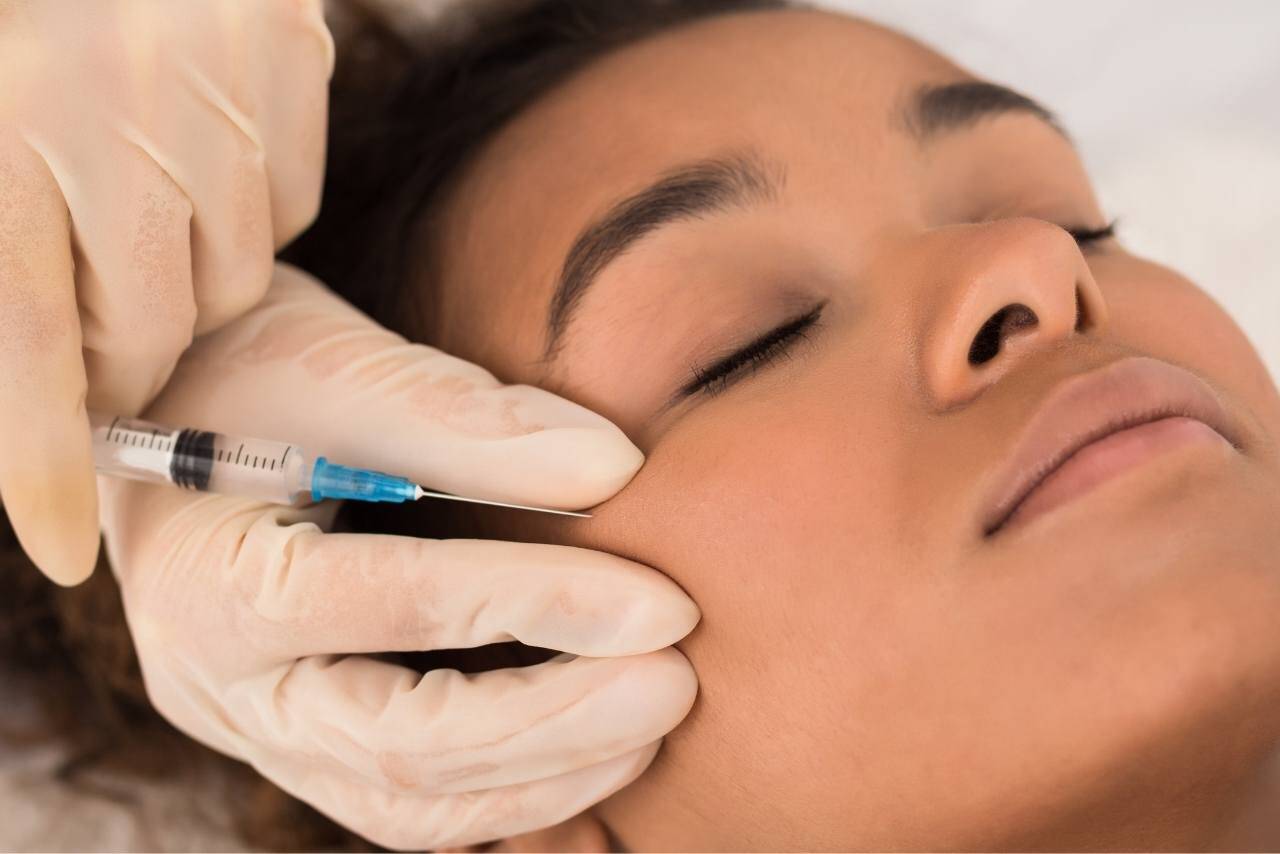
Ellansé is a unique collagen-stimulating dermal filler designed not only to correct wrinkles and folds but also to harness the body’s natural regenerative capabilities for long-lasting, natural-looking results. Unlike traditional hyaluronic acid fillers, Ellansé provides a dual-action approach that offers both immediate volume and sustained skin rejuvenation. This guide offers medical professionals a comprehensive overview of Ellansé’s mechanism, its versatile product line, clinical applications, and patient management protocols.
In This Guide
Mechanism of Action: A Dual-Action Approach
Ellansé stands apart from other fillers due to its unique, patented composition that delivers results in two distinct phases. The formulation consists of 30% Poly-L-Caprolactone (PCL) microspheres smoothly suspended in a 70% Carboxymethyl Cellulose (CMC) aqueous gel carrier.
- Phase 1: Immediate Volumization. Upon injection, the CMC gel immediately fills space, correcting wrinkles, folds, and contour deficiencies for an instant aesthetic improvement. This gel carrier is fully bioresorbable and lasts for approximately 12 weeks before being naturally metabolized by the body.
- Phase 2: Sustained Neocollagenesis. As the CMC gel is absorbed, the PCL microspheres begin their primary function as a biostimulant. These perfectly spherical microspheres act as a scaffold, stimulating fibroblasts to produce new, high-quality Type I and Type III collagen. This process of neocollagenesis replaces the volume of the resorbed gel carrier, creating a durable, natural-looking restoration of the skin’s underlying structure.
This dual-action mechanism ensures a seamless transition from immediate correction to long-term, natural-looking rejuvenation, as the patient’s own tissue provides the lasting volume.
The Ellansé Portfolio: Tunable Longevity
A key clinical advantage of the Ellansé family is its “Tunable Longevity” technology. The portfolio includes four distinct products that differ only in the length of their PCL polymer chains, allowing practitioners to offer predictable and tailored treatment durations based on patient goals and anatomy.
- Ellansé-S (Short): Results lasting up to 18 months.
- Ellansé-M (Medium): Results lasting up to 2 years.
- Ellansé-L (Long): Results lasting up to 3 years.
- Ellansé-E (Extra-Long): Results lasting up to 4 years.
This unique feature allows for a highly customized approach, making Ellansé a cost-effective option for patients who prefer fewer maintenance sessions compared to traditional HA fillers.
Clinical Applications and Treatment Areas
Ellansé is a highly versatile filler suitable for addressing a wide range of aesthetic concerns related to volume loss and skin laxity. Its robust yet moldable consistency makes it effective for both structural contouring and soft tissue augmentation.
- Temples and Brow Area: Restores volume to hollow temples and provides a subtle brow lift.
- Cheeks: Augments the cheekbones, lifts the mid-face, and restores volume to sunken areas for a more youthful contour.
- Nasolabial Folds & Marionette Lines: Effectively softens deep folds and lines by providing structural support to the surrounding tissue.
- Jawline and Chin: Ideal for sculpting a more defined jawline and remodeling the chin for an improved facial profile.
Patient Selection and Contraindications
Ellansé is a viable option for both male and female adult patients exhibiting signs of facial aging or requiring contour correction. Ideal candidates are those seeking natural, long-lasting results and who understand the gradual nature of collagen stimulation.
However, the treatment is contraindicated for certain individuals. A thorough review of the patient’s medical history is essential. Patients who should not receive Ellansé include:
- Women who are pregnant or breastfeeding.
- Patients with a known hypersensitivity to any of the filler’s components.
- Individuals with a history of forming keloid or hypertrophic scars.
- Patients with active skin infections or severe allergies.
- Those with permanent implants in the desired treatment area.
Treatment Protocol and Aftercare
A single session of Ellansé is typically sufficient to achieve the desired outcome, with results lasting for the duration of the selected product. The procedure takes approximately 30-45 minutes.
Using a pre-filled syringe and a 27G needle or cannula, the product should be injected into the subdermal or supraperiosteal plane, depending on the treatment area and desired effect. Techniques such as retrograde linear threading, fanning, or cross-hatching can be employed.
Post-treatment, patients can resume daily activities with minimal downtime. Advise patients to adhere to the following aftercare instructions:
- Avoid vigorous exercise and hot baths for 24 hours.
- Avoid over-exposure to sun and UV light for one week following treatment.
- Refrain from applying heavy makeup for 24 hours to prevent infection.
Safety Profile and Side Effects
Ellansé has a strong safety profile, confirmed by extensive clinical use and its CE Mark certification. The primary components, PCL and CMC, are well-documented medical polymers that are fully bioresorbable, breaking down into carbon dioxide and water before being naturally eliminated by the body.
Side effects are typically mild, temporary, and injection-related. Patients may experience localized:
- Redness
- Swelling
- Bruising
- Mild discomfort
These reactions generally resolve within a few days. Unlike HA fillers, Ellansé cannot be dissolved with hyaluronidase, making precise and skilled injection technique paramount.
Conclusion
Ellansé offers a sophisticated and effective solution for facial rejuvenation that extends beyond simple volumization. Its dual-action mechanism provides immediate correction while stimulating the body’s own collagen production, resulting in exceptionally natural and durable outcomes. With its tunable longevity and strong safety profile, Ellansé empowers medical professionals to deliver highly personalized treatments that meet the evolving demands of aesthetic medicine. For patients seeking a long-lasting and regenerative approach to facial aging, Ellansé is a premier clinical choice.
Ellansé Frequently Asked Questions

About the Author: Doris Dickson is a specialist writer for Health Supplies Plus, focusing on the aesthetic medicine industry. She diligently researches cosmetic treatments and products to provide clear, concise information relevant to licensed medical professionals. Her work supports Health Supplies Plus’s commitment to being a reliable informational resource and trusted supplier for the aesthetic community.
Disclaimer: The content provided in this article is intended for informational purposes only and is directed towards licensed medical professionals. It is not intended to be a substitute for professional medical advice, diagnosis, or treatment, nor does it constitute an endorsement of any specific product or technique. Practitioners must rely on their own professional judgment, clinical experience, and knowledge of patient needs, and should always consult the full product prescribing information and relevant clinical guidelines before use. Health Supplies Plus does not provide medical advice.
